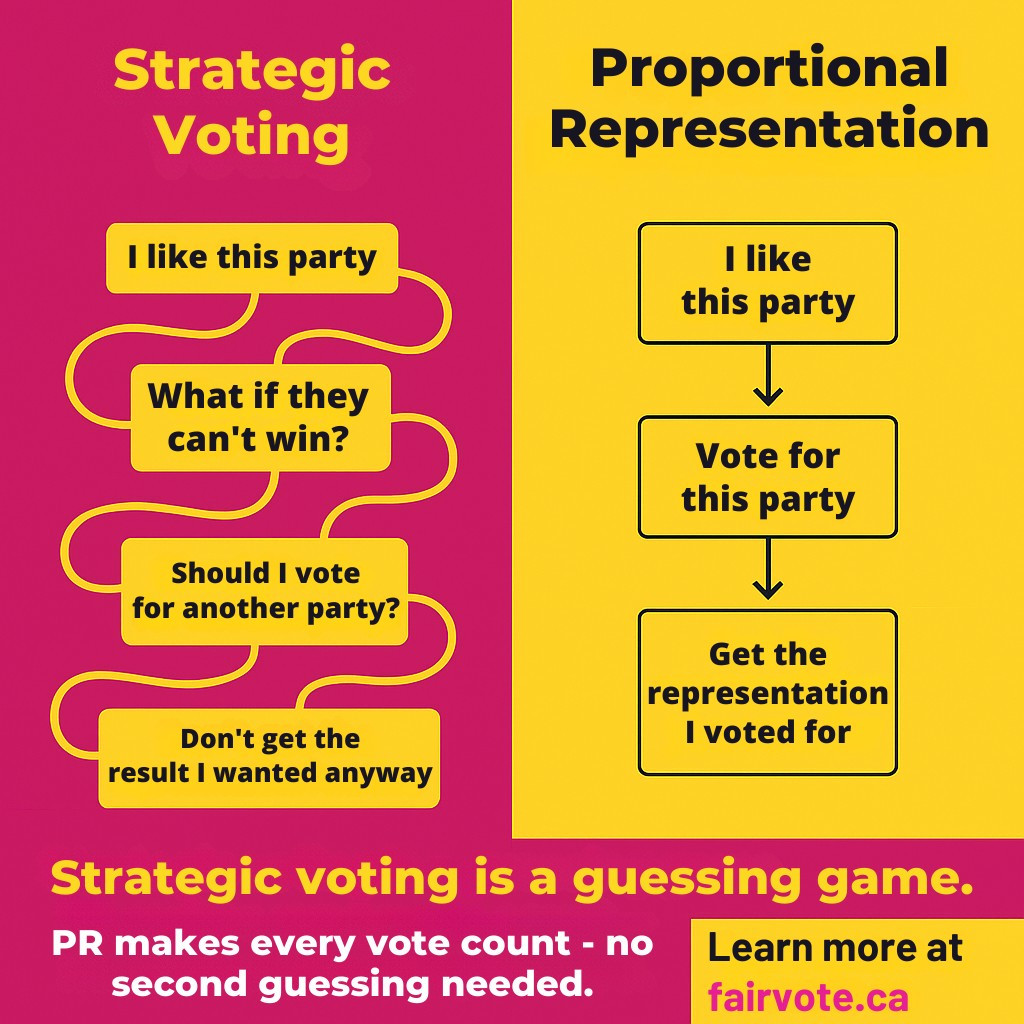Fairvote Canada
What is This Group is About?
De Quoi Parle ce Groupe?
The unofficial non-partisan Lemmy movement to bring proportional representation to all levels of government in Canada.
🗳️Voters deserve more choice and accountability from all politicians.
Le mouvement non officiel et non partisan de Lemmy visant à introduire la représentation proportionnelle à tous les niveaux de gouvernement au Canada.
🗳️Les électeurs méritent davantage de choix et de responsabilité de la part de tous les politiciens.

- A Simple Guide to Electoral Systems
- What is First-Past-The-Post (FPTP)?
- What is Proportional Representation (PR)?
- What is a Citizens’ Assembly?
- Why referendums Aren't Necessary
- The 219 Corrupt MPs Who Voted Against Advancing Electoral Reform
Related Communities/Communautés Associées
Resources/Ressources
Official Organizations/Organisations Officielles
- List of Canadian friends of Democracy Bluesky
- Fair Vote Canada: Bluesky
- Fair Voting BC: Bluesky
- Charter Challenge for Fair Voting: Bluesky
- Electoral Renewal Canada: Bluesky
- Vote16: Bluesky
- Longest Ballot Committee: Bluesky
- ~~Make Votes Equal / Make Seats Match Votes~~
- Ranked Ballot Initiative of Toronto (IRV for municipal elections)
We're looking for more moderators, especially those who are of French and indigenous identities.
Politiques de modération de contenu
Nous recherchons davantage de modérateurs, notamment ceux qui sont d'identité française et autochtone.
view the rest of the comments

https://www.veritasium.com/videos/2025/1/17/why-democracy-is-mathematically-impossible
The title is clickbaity but the point stands. PR is just a different kind of suboptimal. If you want election reform, please push for something more modern than just another system with inherent problems.
@cdegroot @AlolanVulpix What did you have in mind? I watched the whole video and I didn't see PR mentioned at all. He was pretty down on ranked choice voting as a voting method, but then seemed to say at least it's better than FPTP. He also said most countries in the world use ranked choice voting to elect their leaders, which... is not true. He seemed keen on approval voting, which I've read can also be used with multi-winner proportional systems, though I think that's pretty theoretical. Either way, seems like less suboptimal is always a worthwhile direction to go.
You're exactly right, @cosmo. PR isn't mentioned in the video specifically - it's primarily about voting mechanisms (how voters express preferences) rather than seat allocation methods (how those preferences translate to representation).
The video does contain some inaccuracies. At 1:19, it claims FPTP is used in 44 countries, but fails to mention that most democracies use some form of proportional representation. And it conflates ranked-choice voting with instant-runoff voting, which leads to confusion.
The key insight is that proportionality and ballot type are separate issues:
You're absolutely correct that approval voting (a rated system) can be adapted for proportional representation through systems like Proportional Approval Voting or Satisfaction Approval Voting. Similarly, ranked ballots can be used in proportional systems like Single Transferable Vote (STV).
The fundamental question isn't which ballot type to use, but whether the system ensures that citizens get the representation they voted for. In our current system, roughly half of all valid votes elect nobody at all.
As you say - moving toward less suboptimal is worthwhile! And on that metric, proportional representation clearly outperforms our current system.